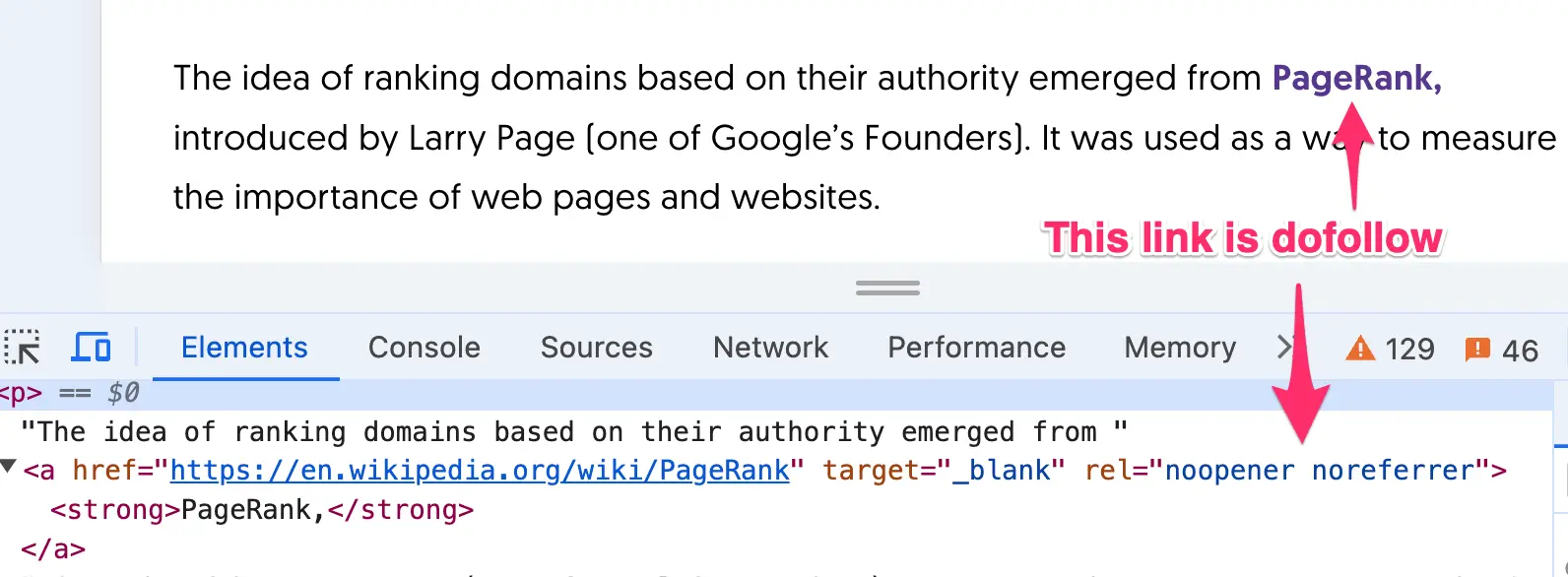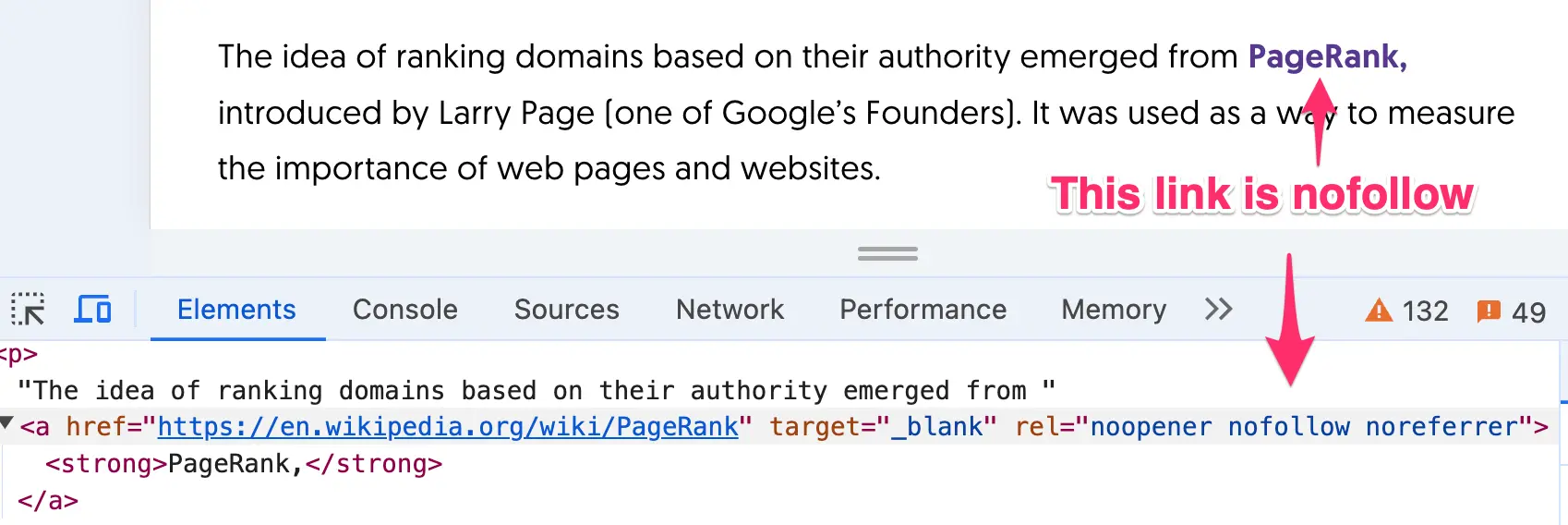What Is a Dofollow Link?
A dofollow link is a hyperlink that allows search engines to follow it and pass authority from one domain to another. Adding dofollow links in your content is like telling search engines that you trust the linked page's content.
This transfer of authority, often referred to as "link juice," can positively impact the linked site's search engine rankings.
By default, all links are dofollow unless they have the "nofollow," "UGC," or "sponsored" attribute in the link properties. It should be noted that there is no dofollow attribute. Any link that doesn't have these attributes is considered a "follow" link.
Here is an example of a dofollow link that points to my home page:
<a href="https://www.reliablesoft.net">Reliablesoft</a>
DoFollow vs. NoFollow Links
The main difference between dofollow and nofollow links is how search engines treat them. Dofollow links contribute to your site's authority and can positively influence rankings, while nofollow links do not pass on link juice.
From a user perspective, there is no difference. Both types of links still work and redirect users to the linked page.
Why should you care if a link is a dofollow or nofollow?
Both dofollow and nofollow links can impact your SEO in different ways. The most important are:
- Getting dofollow links from high-authority and relevant websites can significantly improve your site's domain authority, leading to higher rankings on search engine results pages (SERPs).
- Having too many external links on your website that are dofollow can create problems with your site's reputation. To protect your website, you can make outgoing links as nofollow.
- When running link building campaigns, you should aim for a healthy mix of dofollow and nofollow links, which look natural to search engines and can help build trust.
How To Check If A Link Is DoFollow?
The easiest way to check if a link is a dofollow, is by viewing the source code of a page and examining the <a> element. Here is how to do this:
- Visit the website that contains the link you want to check.
- Highlight the word(s) that make up the link.
- Right-click and select INSPECT. This will show you the hyperlink code.
- Examine between the <a></a> tag for the presence of the rel="sponsored", rel="nofollow", and rel="ugc" attributes.
- If none of these attributes are present, the link is a "follow" link.
- If any of these attributes are present, the link is a "nofollow" link.
Here is an example of how a dofollow link looks:

And how the same link looks when it's a nofollow link:

Notice that the "rel=" attribute can contain combinations of values. Noopener and Noreferrer values are NOT related to dofollow or nofollow links.
DoFollow Links Best SEO Practices
For dofollow links pointing from other websites to yours (known as backlinks), follow these practices:
Try to acquire links from relevant to your industry websites with a higher domain authority than yours. These links carry more weight and can significantly boost your SEO.
Don't participate in link schemes but try to get dofollow links naturally by publishing content that naturally attracts links, such as in-depth guides, original research, and high-quality infographics.
Network with influencers, bloggers, and industry leaders. Personal connections can lead to natural backlinks from their sites.
To check your website links, read: Who Links to My Site or Any Site?
For dofollow links pointing from your website to others (known as outbound or external links), follow these practices:
Ensure the sites you link to are reputable and provide valuable information.
Only link to content that is directly related to your article.
Ensure the anchor text is descriptive and relevant to the content you’re linking. This helps search engines understand the context.
Limit the number of outbound links. Too many outbound links can distract your readers. Focus on a few high-quality links that enhance your content.
Regularly check your website for broken links to ensure they still lead to relevant, high-quality content.
Learn More About Links And SEO
Concepts like dofollow and nofollow links are difficult to understand for SEO beginners. To get started with SEO, read our SEO Basics Guide. It's suitable for people without prior experience and will teach you basic and advanced SEO concepts.



